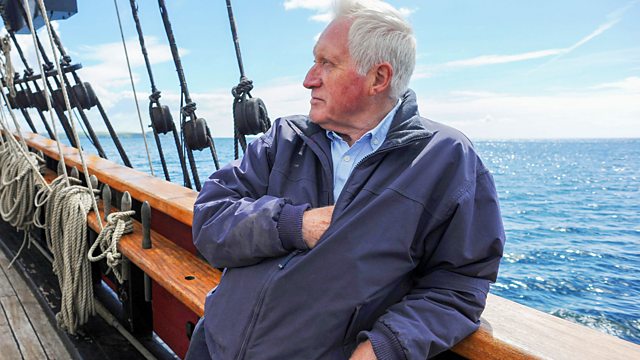Britain and the Sea episode 2: David Dimbleby continues his voyage round Britain, sailing his boat Rocket along the south east coast from Hampshire to Kent. This was the front line coast, the edge of Britain essential to its defence and the first point of attack for invasion forces. From the great battleships of Nelson to the sea forts of Henry VIII, this is a story that embraces Britain’s darkest and most heroic moments.
David Dimbleby takes to his wooden sailing boat to explore Britain’s rich maritime heritage. David goes inside Lord Nelson’s flagship, HMS Victory.
Britain and the Sea episode 2
Horatio Nelson
Vice-Admiral Horatio Nelson, 1st Viscount Nelson, 1st Duke of Bronte, KB (29 September 1758 – 21 October 1805), also known simply as Admiral Nelson, was a British flag officer in the Royal Navy. His inspirational leadership, grasp of strategy, and unconventional tactics brought about a number of decisive British naval victories during the French Revolutionary and Napoleonic Wars. He is widely regarded as one of the greatest naval commanders in history.
Nelson was born into a moderately prosperous Norfolk family and joined the navy through the influence of his uncle, Maurice Suckling, a high-ranking naval officer. Nelson rose rapidly through the ranks and served with leading naval commanders of the period before obtaining his own command at the age of 20, in 1778. He developed a reputation for personal valour and firm grasp of tactics, but suffered periods of illness and unemployment after the end of the American War of Independence.
The outbreak of the French Revolutionary Wars allowed Nelson to return to service, where he was particularly active in the Mediterranean. He fought in several minor engagements off Toulon and was important in the capture of Corsica, where he was wounded and partially lost sight in one eye, and subsequent diplomatic duties with the Italian states. In 1797, he distinguished himself while in command of HMS Captain at the Battle of Cape St Vincent. Shortly after that battle, Nelson took part in the Battle of Santa Cruz de Tenerife, where the attack failed and he lost his right arm, forcing him to return to England to recuperate. The following year he won a decisive victory over the French at the Battle of the Nile and remained in the Mediterranean to support the Kingdom of Naples against a French invasion.
HMS Victory
HMS Victory is a 104-gun first-rate ship of the line of the Royal Navy, ordered in 1758, laid down in 1759 and launched in 1765. She is best known for her role as Lord Nelson’s flagship at the Battle of Trafalgar on 21 October 1805. She additionally served as Keppel’s flagship at Ushant, Howe’s flagship at Cape Spartel and Jervis’s flagship at Cape St Vincent. After 1824, she was relegated to the role of harbour ship.
In 1922, she was moved to a dry dock at Portsmouth, England, and preserved as a museum ship. She has been the flagship of the First Sea Lord since October 2012 and is the world’s oldest naval ship still in commission, with 244 years’ service as of 2022.
In December 1758, William Pitt the Elder, in his role as head of the British government, placed an order for the building of 12 ships, including a first-rate ship that would become Victory. During the 18th century, Victory was one of ten first-rate ships to be constructed. The outline plans were based on HMS Royal George which had been launched at Woolwich Dockyard in 1756, and the naval architect chosen to design the ship was Sir Thomas Slade who, at the time, was the Surveyor of the Navy.
She was designed to carry at least 100 guns. The commissioner of Chatham Dockyard was instructed to prepare a dry dock for the construction. The keel was laid on 23 July 1759 in the Old Single Dock (since renamed No. 2 Dock and now Victory Dock), and a name, Victory, was chosen in October 1760. In 1759, the Seven Years’ War was going well for Britain; land victories had been won at Quebec and Minden and naval battles had been won at Lagos and Quiberon Bay. It was the Annus Mirabilis, or Wonderful Year, and the ship’s name may have been chosen to commemorate the victories or it may have been chosen simply because out of the seven names shortlisted, Victory was the only one not in use. There were some doubts whether this was a suitable name since the previous Victory had been lost with all hands in 1744.




